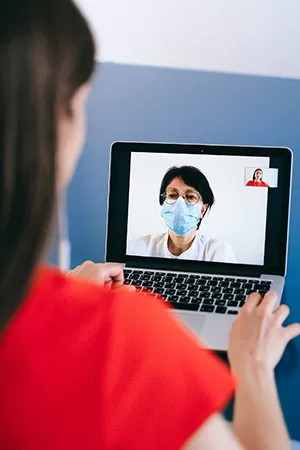The Assistant Secretary for Planning and Evaluation (ASPE) is the principal advisor to the Secretary of the U.S. Department of Health and Human Services on policy development, which is primarily responsible for major activities in policy coordination, legislation development, strategic planning, policy research, evaluation, and economic analysis. The organization recently released an Issue Brief titled “Updated National Survey Trends in Telehealth Utilization and Modality” (2021-2022). The brief presents its findings relating to telehealth utilization. Included in the survey was trends which considered both video-based telehealth and audio-only phone-based telehealth.

Telehealth utilization has changed since the steep increase from the early stages of the COVID-19 pandemic. This report updates prior findings on national trends of telehealth use through an analysis using the Census Bureau’s Household Pulse Survey data from April 2021 through August 2022. Understanding patterns and factors associated with telehealth use are important in making informed policy decisions.
Following are some of the key ASPE’s telehealth findings and trends:
- Compared to earlier periods in the pandemic, telehealth utilization was lower during the study period (April 14, 2021 through August 8, 2022), but continued to remain above pre-pandemic levels.
- Telehealth use rates varied throughout the study period between 20.5% and 24.2%, with an average of 22% of adults reporting use of telehealth in the last four weeks.
- Telehealth use rates were lowest among people who are uninsured (9.4%), young adults ages 18 to 24 (17.6%), and residents of the Midwest (18.7%).
- The highest rates of telehealth visits were among those covered by Medicaid (28.3%) and Medicare (26.8%), individuals who are Black (26.1%), and those earning less than $25,000 (26.4%).
- Individuals who are Hispanic or Latino, Black, and Asian were more likely to use telehealth, specifically audio-only telehealth, than individuals who are White; however, they were less likely to use video telehealth services than individuals who are White. There were significant disparities among subgroups in terms of audio-only versus video-based telehealth use.
- Persistent disparities in accessing video telehealth services requires further study on patient preferences and how broadband programs, technology resources, and technology literacy training programs can improve patient access to video telehealth services.
Telehealth Utilization Consistently Trending Up
Among the key results of the ASPE was that telehealth use has consistently remained above 20% from 2021-2022 for all population groups, however, there were disparities persisted in video utilization from July 2021 to August 2022. Backing up this finding were these statistics:
- 22.5% of the 1,180,248 adults who participated in the telehealth utilization study reported use of audio-only or video within the last week of the study period, and
- 18.1% of 367,887 adults with a child in the household used telehealth services in the prior period.
Other findings related to how individuals of different races used telehealth were that:
- 49.7% of Hispanics used video telehealth and 50.3% used audio telehealth;
- 61.3% of Whites used video telehealth and 38.7% used audio telehealth;
- 59.1% of Blacks used video telehealth and 49.9% used audio telehealth;
- 49.5% of Asian used video telehealth and 50.5% used audio telehealth; and
- 59.8% of two or more races and others used video telehealth and 40.2% used audio telehealth.
As for insurers, the ASPE urged that telehealth policies be flexible to facilitate access to telehealth service, and to consider outreach activities to those communities where lower level of video-based and audio-based telehealth exists.


